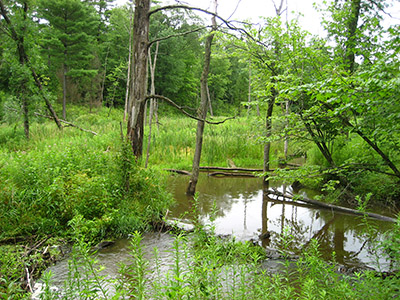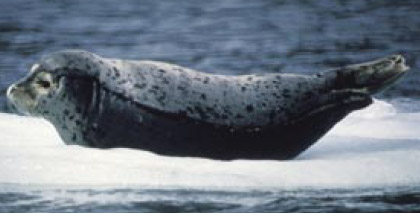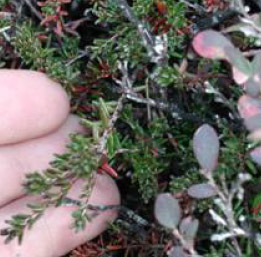
Did You Know? - Things you may not know about the Adirondack Park
Monday, August 18, 2014
By: Lisa M. Genier
I was born and raised in the Adirondacks and have worked for the Adirondack Council for over 22 years. I've learned so much about the Adirondack Park and what it has to offer. But everyday, I learn more about this magnificent place. Read on! You may learn something new about the Adirondack Park too.
Did you know?
The Adirondacks Park is one-fifth of the size of the State of New York, and is the largest protected area in the continental U.S.; it is larger than Yosemite, Everglades, Grand Canyon, and Yellowstone National Parks combined.

Big Brook Marsh
Willsboro Bay
Wetlands, like Big Brook Marsh pictured left, cover about one million acres or 15 percent of the Adirondack Park’s wildlands.
The Adirondack Park contains the largest roadless area east of the Rocky Mountains.
The Adirondack mountains are made of ancient rocks more than a one-billion years old.
The Bicknell's Thrush, a bird that breeds in the high elevations of the Adirondacks, winters in the Caribbean.
The Adirondacks form the headwaters for most or part of the five major drainage basins in New York State: Lake Champlain and the Hudson, Black, St. Lawrence, and Mohawk Rivers.

Harbor seal (Phoca vitulina)
Photo: USFW
The Harbor seal was once a top predator in Lake Champlain until people exterminated it in the 1800s.
The elevation in the Adirondacks ranges from 100 feet above sea level on the shores of Lake Champlain to 5,344 feet at the peak of Mount Marcy.
Within the Park, there are more than 2,800 lakes and ponds and more than 1,500 miles of rivers.
Although the year round population of the Adirondack Park is just over 130,000 people, there are more than 10 million visitors to the Park each year.
Only 43 of the 46 High Peaks in the eastern Adirondacks rise above 4,000 feet.
The Adirondacks are home to the largest known contiguous tract of old growth forest in the Northeast. It is estimated that from 42,000 to 50,000 acres are located in the southern part of Five Ponds Wilderness Area in the western part of the Park.

Purple crowberry
(Empetrum eamesii)
About 85 acres on the top of the highest mountains in the Adirondacks have an alpine climate and resemble the arctic tundra. These areas contain some of the state’s rare and endangered plant species, such as the Purple crowberry.
The Adirondack Park has the largest intact temperate forest in the world that is home to wide-roaming wildlife like moose, bobcat, and black bear.
I work for the Adirondack Council because the Park is so unique and special, and I love it. The Council advocates to protect this wonderful place, its wilderness, its creatures, and its clean water. For the love of the Adirondacks, please join us.
Would you like to comment on what you've read or viewed? We'd love to hear from you. Please click to send us a message.
 Lisa M. Genier joined the Council in 1992 working as its Legislative Associate in the Albany office. During her tenure, she played a role in the creation of the Environmental Protection Fund, which has been used to fund land purchases and environmental programs in the Adirondack Park and around the state. She was also a member of the negotiating teams that worked on re-licensing agreements for several hydroelectric facilities in the Park, which preserved thousands of acres of land, expanded recreational opportunities, and protected other natural resources. Lisa now works part-time as Program Analyst writing action alerts, interacting with members, managing the Council’s website, and serving in a consultative role on legislative and other issues.
Lisa M. Genier joined the Council in 1992 working as its Legislative Associate in the Albany office. During her tenure, she played a role in the creation of the Environmental Protection Fund, which has been used to fund land purchases and environmental programs in the Adirondack Park and around the state. She was also a member of the negotiating teams that worked on re-licensing agreements for several hydroelectric facilities in the Park, which preserved thousands of acres of land, expanded recreational opportunities, and protected other natural resources. Lisa now works part-time as Program Analyst writing action alerts, interacting with members, managing the Council’s website, and serving in a consultative role on legislative and other issues.
Lisa is a member of the Department of Environmental Conservation’s Accessibility Advisory Committee that works to make the Forest Preserve and other DEC facilities around the state more accessible for people with disabilities while protecting the natural resources.
Lisa grew up in Mineville (Town of Moriah) in the Adirondacks. She attended the State University of New York at Oneonta and graduated in 1989 summa cum laude with degrees in Political Science and Business Economics. Lisa currently lives in Schenectady with her partner, Val and their four cats and dog.




